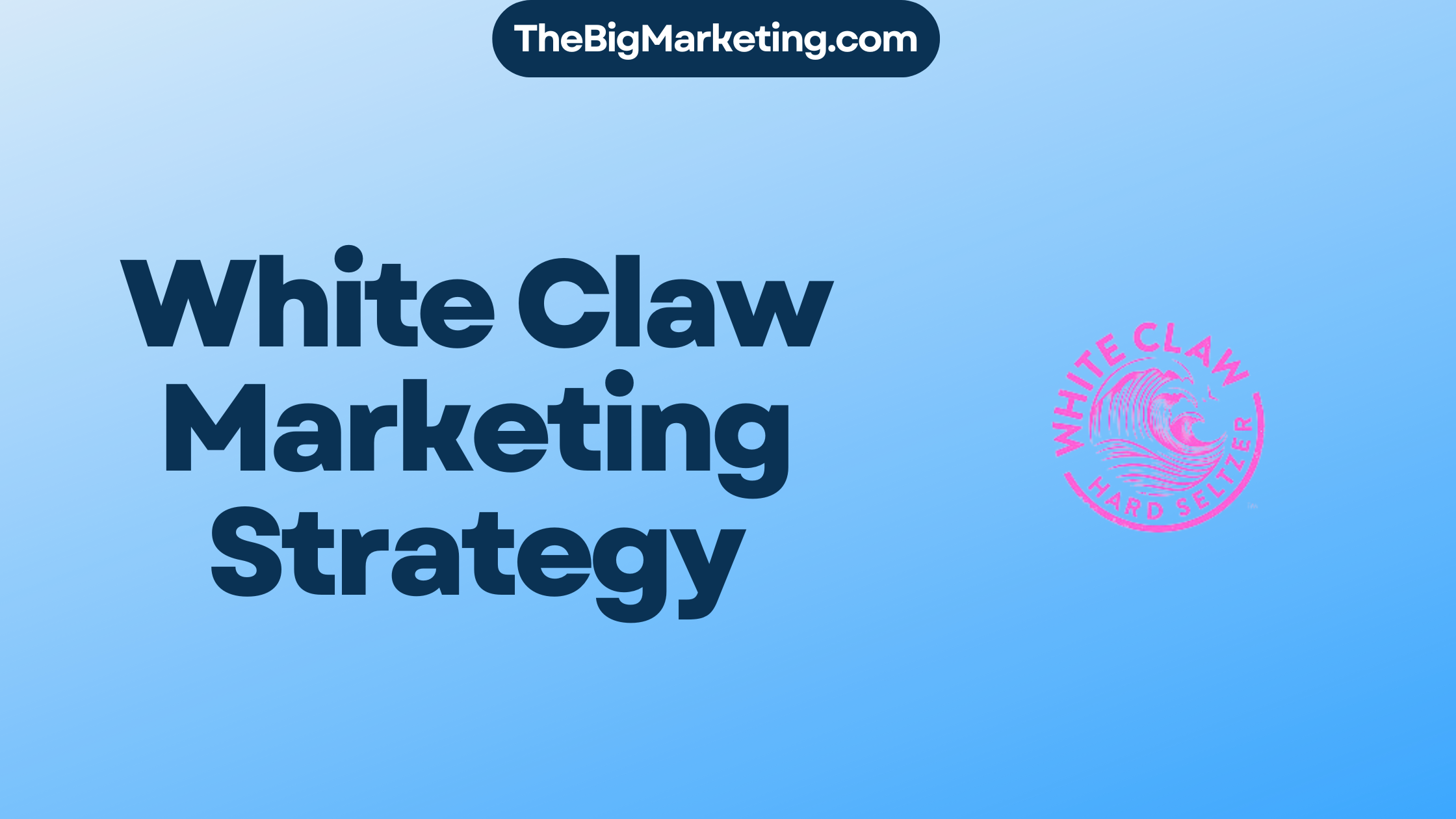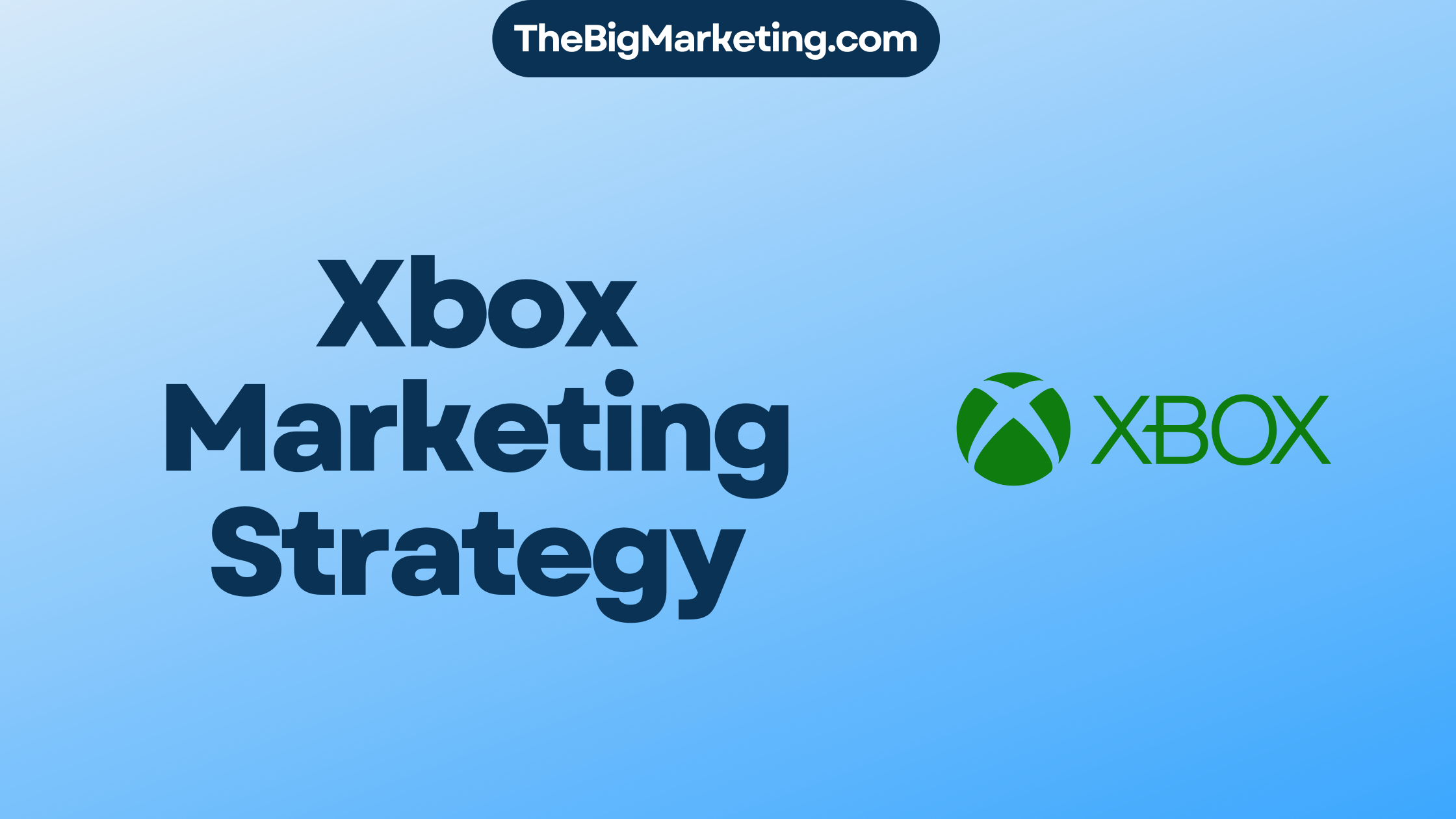Kellogg’s, founded in 1906 by Will Keith Kellogg, is a global leader in the production of cereal and convenience foods. With products available in over 180 countries, Kellogg’s marketing strategy plays a crucial role in shaping its market presence and consumer engagement. This case study will delve into the various aspects of Kellogg’s marketing strategy for 2024 and highlight the key techniques and objectives employed by the company.
Key Takeaways:
- Kellogg’s Marketing Strategy encompasses various advertising techniques to promote its brand and products.
- Digital marketing plays a vital role in Kellogg’s overall marketing plan.
- Kellogg’s focuses on conducting thorough market research and competitive analysis to stay ahead in the industry.
- The company targets a specific audience and tailors its marketing campaigns accordingly.
- Kellogg’s marketing objectives revolve around brand promotion, increasing market share, and driving consumer engagement.
Understanding Kellogg’s Marketing Strategic Planning
When it comes to executing a successful marketing strategy, Kellogg’s has consistently demonstrated its expertise and effectiveness. In this section, we will delve into the intricacies of Kellogg’s marketing strategic planning and explore the factors that shape their decision-making process. Through real-life case studies, we can gain valuable insights into Kellogg’s marketing strategy and the key principles they employ to achieve their goals.
The Role of Marketing Strategic Planning at Kellogg’s
Kellogg’s understands the importance of strategic planning in guiding their marketing initiatives. Intensive research, data analysis, and market insights drive their decision-making process. Through careful evaluation and identification of opportunities and challenges, Kellogg’s develops comprehensive marketing strategies that align with their business objectives.
Factors Influencing Kellogg’s Marketing Strategy
Kellogg’s marketing strategy is influenced by a multitude of factors. These include market trends, consumer preferences, competitive analysis, and technological advancements. By closely monitoring and analyzing these factors, Kellogg’s ensures their marketing strategies remain relevant, innovative, and impactful in an ever-evolving marketplace.
Insights from Case Studies
Examining real-life case studies provides us with valuable insights into Kellogg’s marketing strategic planning. By analyzing the challenges they faced, the strategies they implemented, and the outcomes they achieved, we can gain a deeper understanding of Kellogg’s decision-making process and the factors that contribute to their marketing success.
| Case Study | Key Insights |
|---|---|
| Case Study 1: Launch of New Product Line | Strategic market research and target audience analysis were crucial in identifying a gap in the market and successfully launching a new product line. |
| Case Study 2: Digital Marketing Transformation | Embracing digital channels and leveraging data-driven marketing techniques enabled Kellogg’s to effectively reach and engage with their target audience, resulting in increased brand awareness and customer loyalty. |
| Case Study 3: Collaborative Partnerships | Collaborating with complementary brands and influencers allowed Kellogg’s to tap into new markets, expand their reach, and create impactful marketing campaigns. |
Through these case studies and the analysis of their marketing strategic planning, we can uncover valuable lessons and apply them to our own marketing strategies. Kellogg’s serves as an excellent example of how meticulous planning, adaptability, and innovation can drive marketing success.
Launch of Kellogg’s India and Initial Challenges
Kellogg’s, a global leader in the production of cereal and convenience foods, made its foray into the Indian market with a massive investment from the parent brand. However, the company faced significant challenges during the initial phase, including a decline in sales and struggles to establish a foothold in the market. This section delves into the factors that contributed to these setbacks and analyzes the marketing challenges faced by Kellogg’s in India.
Product Launch
The launch of Kellogg’s in India aimed to introduce the brand’s globally recognized breakfast cereals to the Indian consumers. With a diverse range of products catering to different tastes and preferences, Kellogg’s intended to capture a significant share of the Indian breakfast cereal market.
Marketing Challenges
Despite its strong brand reputation, Kellogg’s encountered various marketing challenges in the Indian market. One of the notable difficulties was the lack of awareness and familiarity among Indian consumers regarding the concept of breakfast cereals. This required Kellogg’s to educate the target audience about the nutritional value and convenience of their products.
Additionally, Kellogg’s faced competition from local players offering traditional Indian breakfast options like poha, upma, and parathas. Adapting to the Indian palate and preferences posed another challenge for Kellogg’s to appeal to the taste buds of the Indian consumers.
The pricing strategy was also a crucial aspect that contributed to the marketing challenges faced by Kellogg’s in India. The premium pricing of Kellogg’s products in comparison to traditional breakfast options made it difficult to convince price-sensitive Indian consumers to switch to cereals.
Sales Decline
Kellogg’s experienced a noticeable decline in sales during the initial phase of its operations in India. The combination of lack of awareness, competition from traditional breakfast options, and pricing challenges resulted in sluggish sales growth.
The sales decline further intensified the struggle for Kellogg’s to establish a strong presence and gain a considerable market share in India’s highly competitive breakfast cereal market.
To overcome these challenges and turn the tide, Kellogg’s needed to formulate effective marketing strategies and adapt its approach to suit the Indian market dynamics.
Analyzing Kellogg’s Mistakes and Learnings
Kellogg’s initial entry into the Indian market was marked by a series of mistakes that hindered its success. These mistakes encompassed overlooking cultural aspects, misinterpreting consumer behavior, and implementing a premium pricing policy. In order to understand the impact of these missteps, let’s analyze each one in detail:
1. Overlooking Cultural Aspects
One of Kellogg’s key mistakes was disregarding the cultural nuances and dietary preferences of Indian consumers. The company failed to recognize that breakfast in India often includes savory and homemade options, rather than the sweet and packaged cereals that Kellogg’s specializes in. This oversight resulted in a disconnection between Kellogg’s offerings and the local food culture.
2. Misunderstanding Consumer Behavior
Kellogg’s also stumbled in accurately comprehending Indian consumer behavior. The company assumed that replicating its successful marketing strategies from Western markets would suffice. However, Indian consumers have distinct preferences and buying habits, which required a tailored approach. Kellogg’s initial advertisements failed to resonate with Indian consumers, leading to a lack of brand recall and inefficient marketing spend.
3. Adopting a Premium Pricing Policy
Kellogg’s decision to position its cereals as a premium product in India further compounded its challenges. The pricing strategy created a perception that Kellogg’s products were luxurious and inaccessible for the average Indian consumer. As a result, affordability became a deterrent, curtailing the brand’s potential market penetration.
These mistakes highlight the importance of understanding cultural aspects and consumer behavior when entering a new market. However, Kellogg’s was quick to recognize and rectify these errors, and the learnings from these experiences contributed to their subsequent success in India. By adapting their strategies to align with Indian preferences and introducing localized variants, Kellogg’s was able to overcome these initial setbacks.
| Mistake | Impact | Solution |
|---|---|---|
| Overlooking Cultural Aspects | Disconnection from local food culture | Introduction of region-specific flavors and savory options |
| Misunderstanding Consumer Behavior | Lack of brand recall and inefficient marketing spend | Customized marketing campaigns targeting Indian preferences and habits |
| Adopting a Premium Pricing Policy | Perceived as a luxury item and unaffordable | Price adjustment to enhance affordability and market accessibility |
Key Learnings
Kellogg’s experience in India serves as a valuable lesson for companies venturing into new markets. It underscores the importance of conducting thorough market research, adapting to local cultural nuances, and tailoring marketing strategies to suit consumer behavior. By analyzing their mistakes and implementing effective solutions, Kellogg’s was able to overcome initial challenges and establish a strong foothold in the Indian market.
Stay tuned for the next section where we will explore the revival of Kellogg’s image and its subsequent success in India.
Reviving Kellogg’s Image and Success in India
To revive its image and regain market share, Kellogg’s implemented a strategic shift in its target audience and introduced new products tailored to the Indian market. By exploring innovative marketing strategies and embracing Indianization, Kellogg’s successfully revived its image and achieved significant sales growth in India.
Target Change: Appealing to Children
Kellogg’s recognized the need to adapt to the preferences and demands of the Indian market. Instead of solely targeting parents, the company shifted its focus to appeal directly to children, recognizing their influence in the purchasing decisions of cereals. Understanding the importance of brand loyalty established during childhood, Kellogg’s developed marketing campaigns that resonated with young consumers, leveraging characters, storytelling, and appealing packaging.
New Product Launches: Chocos and Frosties
Part of Kellogg’s strategy to revive its image in India involved introducing new products that catered to the Indian palate. Two iconic offerings, Chocos and Frosties, were specifically developed and launched in the Indian market. These cereals took into account local flavor preferences, incorporating traditional Indian flavors and ingredients while maintaining the nutritional value and quality that Kellogg’s is known for.
Indianization: Adapting to Local Culture
Recognizing the significance of cultural sensitivity, Kellogg’s incorporated Indianization into its marketing strategy. By adapting its offerings to align with local tastes and traditions, the company established a deeper connection with consumers in India. Additionally, Kellogg’s engaged in localized advertising campaigns, collaborating with local influencers and celebrities to enhance brand visibility and resonate with Indian consumers.
The revival of Kellogg’s image and success in India serves as a testament to the power of targeted marketing strategies and understanding the nuances of the local market. By shifting its target audience, launching new products, and embracing Indianization, Kellogg’s not only revived its brand but also achieved significant sales growth, solidifying its position in the Indian market.
Kellogg’s Market Segmentation and Promotion Mix
Kellogg’s understands the importance of market segmentation in effectively catering to diverse customer segments. By dividing the market into distinct groups, Kellogg’s can tailor its products and marketing efforts to meet the unique needs and preferences of each segment.
Tasty Start
Under the Tasty Start category, Kellogg’s offers a range of delicious and nutritious breakfast options. These products are designed to provide a delicious start to the day while fulfilling the nutritional requirements of the consumers. With flavors that appeal to a wide range of tastes, Kellogg’s Tasty Start options are a favorite among breakfast enthusiasts.
Shape Management
Kellogg’s Shape Management products are specifically developed for consumers who prioritize maintaining a healthy weight and following a balanced diet. These offerings provide a convenient and satisfying way to manage portion control, making it easier for individuals to make better dietary choices without compromising on taste.
Mum Approved
Kellogg’s recognizes the critical role that mothers play in making purchasing decisions for their families. To cater to this segment, Kellogg’s offers a range of products that are convenient, nutritious, and come with the seal of approval from moms. These products provide assurance to mothers that they are making the right choices for their loved ones.
Kid Preferred
Kellogg’s understands the importance of appealing to children, who often have unique preferences when it comes to breakfast options. The Kid Preferred product line incorporates fun and exciting flavors and characters that resonate with children, making breakfast a delightful and enjoyable experience.
Inner Health
Kellogg’s Inner Health line is designed to promote overall well-being and support consumers in maintaining a healthy lifestyle. These products focus on incorporating ingredients that provide essential nutrients, vitamins, and minerals to support consumers’ inner health needs.
| Promotion Mix Category | Description |
|---|---|
| Tasty Start | Delicious and nutritious breakfast options |
| Shape Management | Products for maintaining a healthy weight and diet |
| Mum Approved | Convenient and nutritious choices for families |
| Kid Preferred | Fun and exciting options for children |
| Inner Health | Products supporting overall well-being |
Competitors Analysis in the Breakfast Cereal Industry
Kellogg’s operates in a highly competitive breakfast cereal industry, where it faces various players vying for market share. Two prominent competitors of Kellogg’s in this industry are Pepsico’s Quaker Oats and Nestle Corn Flakes. To gain a deeper understanding of Kellogg’s competitive landscape, let’s analyze the key factors and insights.
When comparing Kellogg’s with Pepsico’s Quaker Oats, we observe that both brands have a wide range of cereal products catering to different consumer preferences. However, Kellogg’s emphasizes its strong brand reputation and heritage, while Quaker Oats focuses on promoting its health benefits and oats-based offerings.
In terms of market presence, Kellogg’s has a more extensive global footprint than Quaker Oats, with products available in over 180 countries. Quaker Oats, on the other hand, primarily concentrates on the North American market.
Moving on to Nestle Corn Flakes, we find that it also competes directly with Kellogg’s in the breakfast cereal segment. However, Nestle Corn Flakes differentiates itself through its Swiss heritage and commitment to producing quality food products.
Looking at the market share, Kellogg’s currently holds a significant portion of the breakfast cereal market, maintaining its position as a leader in the industry. However, Pepsico’s Quaker Oats and Nestle Corn Flakes continue to pose a challenge with their strong brand presence and diverse product offerings.
In conclusion, Kellogg’s faces tough competition from Pepsico’s Quaker Oats and Nestle Corn Flakes in the breakfast cereal industry. Despite being a leader in the market, Kellogg’s needs to continuously innovate and adapt its marketing strategies to maintain its competitive edge.
Competitive Analysis Overview:
| Competitor | Key Differentiators | Market Presence |
|---|---|---|
| Kellogg’s | Strong brand reputation, global presence | Available in over 180 countries |
| Pepsico’s Quaker Oats | Focus on health benefits, oats-based offerings | Mainly targets the North American market |
| Nestle Corn Flakes | Swiss heritage, commitment to quality food products | Competes directly with Kellogg’s |
Current Scenario and Market Share of Kellogg’s
The breakfast cereal industry in India is currently experiencing steady growth, with an impressive annual growth rate of 20%. Kellogg’s, the global leader in cereal production, has established a dominant position in this industry, capturing a significant market share of approximately 70%. With sales reaching Rs. 500 crore, Kellogg’s has firmly solidified its presence in the Indian breakfast cereal market.
To gain a better understanding of Kellogg’s market share and the current scenario, let’s take a closer look at the data:
| Market Share | Sales | Growth Rate |
|---|---|---|
| 70% | Rs. 500 crore | 20% annually |
This data clearly reflects Kellogg’s dominance in the breakfast cereal industry in India. With an extensive range of products and a strong marketing strategy, Kellogg’s has successfully captured the attention and loyalty of consumers, thereby securing a sizable market share. As the industry continues to grow, Kellogg’s remains well-positioned to capitalize on the increasing demand for breakfast cereals in India.
Key Insights from Kellogg’s Marketing Case Study
The Kellogg’s marketing case study provides valuable insights into the factors that contributed to the company’s success in India. By examining the key takeaways and success factors identified from this case study, marketers and businesses can gain valuable lessons and apply them to their own strategies.
One of the key insights from the Kellogg’s case study is the importance of a well-defined marketing strategy. Kellogg’s success in India can be attributed to its effective marketing approach, which encompassed a mix of digital marketing, market research, and understanding of consumer behavior. This highlights the significance of developing a comprehensive marketing strategy that aligns with the target audience and business objectives.
Another crucial insight is the emphasis Kellogg’s placed on product localization and adaptation. By introducing products like Chocos and Frosties, specifically designed to cater to the Indian market’s taste preferences and cultural context, Kellogg’s was able to successfully revive its image and achieve significant sales growth. This underscores the importance of understanding local consumer preferences and tailoring products accordingly.
Additionally, the Kellogg’s case study demonstrates the power of effective brand promotion and positioning. Kellogg’s leveraged its established brand reputation and capitalized on its association with health and nutrition to position itself as a trusted choice for families in India. This highlights the significance of creating a strong brand image and effectively communicating key brand attributes to the target audience.
Furthermore, the case study highlights the value of continuous innovation and staying relevant in a dynamic market. Kellogg’s consistently introduced new products and flavors to cater to evolving consumer preferences and maintain consumer interest. This serves as a reminder to businesses that staying ahead of the competition and constantly adapting to changing market trends is critical for long-term success.
Key Insights from Kellogg’s Marketing Case Study:
- A well-defined marketing strategy is crucial for success.
- Product localization and adaptation play a significant role.
- Effective brand promotion and positioning are essential.
- Continuous innovation is key to staying relevant in the market.
The Importance of Marketing Strategy in Business Success
A well-executed marketing strategy is crucial for achieving business success. It serves as a roadmap that guides businesses in reaching their goals and objectives by effectively connecting with their target audience.
Strategic thinking is at the core of a successful marketing strategy. It involves analyzing market trends, identifying opportunities, and developing innovative approaches to differentiate a business from its competitors. By leveraging strategic thinking, businesses can gain a competitive edge and position themselves as industry leaders.
Customer insight plays a vital role in crafting a powerful marketing strategy. Understanding the needs, preferences, and behaviors of the target audience allows businesses to create tailored marketing campaigns that resonate with their customers. By gaining customer insight, businesses can deliver personalized experiences that drive customer engagement and loyalty.
A well-crafted marketing strategy not only helps businesses attract new customers but also enables them to retain existing ones. It ensures that businesses stay relevant in a rapidly changing business landscape and adapt to emerging trends and technologies. By continually refining their marketing strategies based on customer feedback and market analysis, businesses can sustain long-term success.
To further illustrate the importance of marketing strategy, let’s take a look at the following table:
| Key Benefits of Marketing Strategy | Examples |
|---|---|
| Increased brand awareness | Through targeted advertising campaigns and brand messaging |
| Improved customer acquisition | By identifying and targeting the right audience segments |
| Enhanced customer retention and loyalty | By delivering personalized experiences and maintaining strong relationships |
| Effective competitor analysis | By regularly monitoring the market and staying ahead of the competition |
| Optimized resource allocation | By allocating marketing budgets based on return on investment (ROI) |
As demonstrated in the table, a well-executed marketing strategy can lead to numerous benefits such as increased brand awareness, improved customer acquisition, enhanced customer retention and loyalty, effective competitor analysis, and optimized resource allocation.
Overall, the significance of marketing strategy in achieving business success cannot be overstated. By embracing strategic thinking and leveraging customer insight, businesses can develop marketing strategies that not only drive growth but also create lasting customer relationships.
Conclusion
In conclusion, Kellogg’s marketing strategy has played a pivotal role in establishing its strong market presence and driving consumer engagement. Through its innovative approaches, strategic product launches, and deep understanding of consumer behavior, Kellogg’s has successfully overcome various challenges and achieved remarkable growth in the competitive breakfast cereal industry. This comprehensive case study serves as an invaluable resource for marketers and businesses alike, highlighting the significance of a well-crafted marketing strategy and the critical factors that contribute to a company’s marketing success.
By harnessing the power of consumer insights, Kellogg’s has been able to develop and implement effective marketing campaigns that resonate with its target audience. The company’s commitment to continuous innovation and staying ahead of market trends has enabled it to capture the attention of consumers and maintain their engagement over time. The success of Kellogg’s marketing strategy can be attributed to its ability to deliver products that not only meet consumer needs but also align with their values and aspirations.
As the breakfast cereal industry continues to evolve, with changing consumer preferences and increased competition, Kellogg’s marketing strategy remains a driving force behind the brand’s continued growth and success. By leveraging its deep understanding of consumer behavior and employing innovative marketing techniques, Kellogg’s has been able to stay relevant and connect with consumers on a deeper level. This case study serves as an inspiration for businesses looking to achieve marketing success and underscores the importance of a well-executed marketing strategy in driving business growth and market leadership.
FAQ
What is a marketing strategy?
A marketing strategy is a plan of action that an organization uses to promote its products or services, reach its target audience, and achieve its business objectives.
What is Kellogg’s marketing plan?
Kellogg’s marketing plan is a strategic roadmap that outlines the company’s marketing goals and objectives, target audience, marketing tactics, and budget.
What are some advertising techniques used by Kellogg’s?
Kellogg’s uses various advertising techniques such as television commercials, digital advertisements, social media campaigns, influencer marketing, and product placements.
How does Kellogg’s promote its brand?
Kellogg’s promotes its brand through various marketing channels, including advertising, public relations, sponsorship, event marketing, and online marketing campaigns.
What is Kellogg’s digital marketing strategy?
Kellogg’s digital marketing strategy involves leveraging online platforms, such as social media, websites, and mobile applications, to reach and engage with its target audience, increase brand awareness, and drive sales.
Who is Kellogg’s target audience?
Kellogg’s target audience includes individuals of all age groups, with a focus on families, children, and health-conscious individuals looking for convenient and nutritious breakfast options.
What is Kellogg’s marketing campaign?
Kellogg’s marketing campaign refers to a coordinated series of marketing activities designed to promote a specific product or brand, create brand awareness, and persuade consumers to make a purchase.
How does Kellogg’s conduct market research?
Kellogg’s conducts market research by gathering and analyzing data on consumer preferences, purchasing behavior, market trends, and competitor analysis to inform its marketing strategies and decision-making.
What is Kellogg’s competitive analysis?
Kellogg’s competitive analysis involves evaluating the strengths and weaknesses of its competitors, identifying market opportunities, and devising strategies to gain a competitive advantage in the breakfast cereal industry.
What are Kellogg’s marketing objectives?
Kellogg’s marketing objectives include increasing brand awareness, expanding market share, driving product sales, building customer loyalty, and maintaining a strong competitive position in the breakfast cereal industry.







